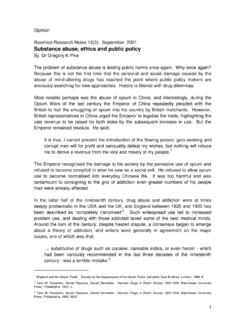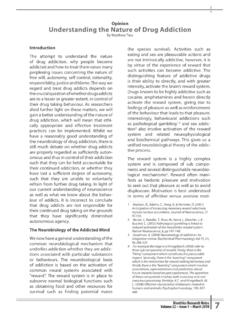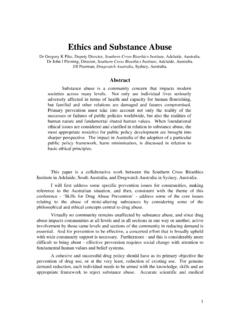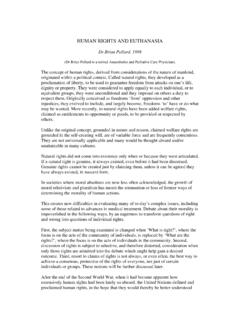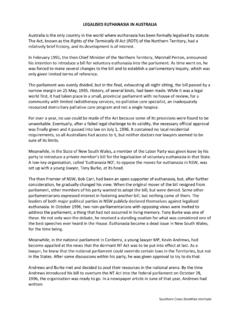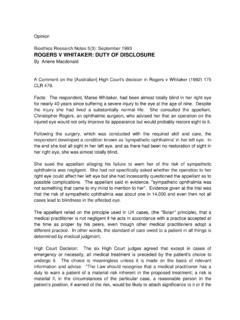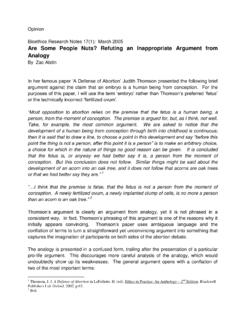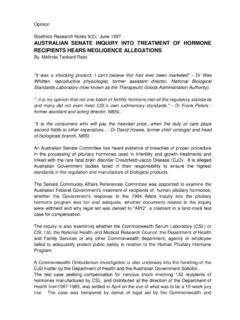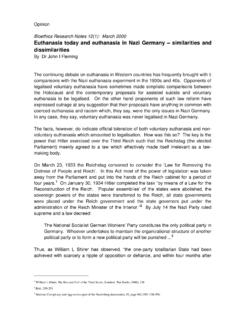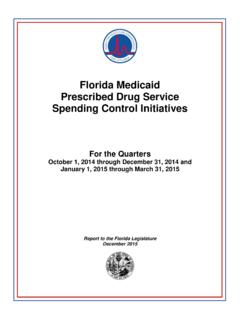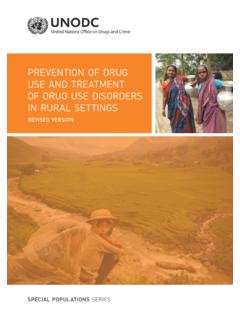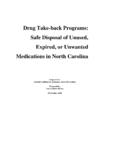Transcription of Opinion Bioethics Research Notes 11(4) December …
1 Opinion Bioethics Research Notes 11(4) December 1999. Performance Indicators of Harm Minimisation: drug policy Outcomes in Sweden, Australia, and the United States By Lucy Sullivan Harm minimisation policy in Australia, in deference to the formal illegality of [the]. psychopathic drugs, has an ostensible meaning, but also a not-so-hidden agenda. Harm minimisation, if it is accepted that drugs are harmful, must mean following policies which will achieve the lowest possible level of drug use; and also, in that it is close to impossible, at least in the short term, to eradicate drug use entirely, it means establishing policies which will ensure the lowest possible harm, as a result of drugs, to those who continue to use them, and also to non- drug -users who may be adversely affected by the behaviour of those who do.
2 Such a policy , if intelligently implemented, requires acknowledgment that policies which are most effective in minimising usage may have a poor rating as regards minimising the harm caused by drugs in the persisting minority of drug users; and that policies which are most effective in minimising self-inflicted and social harm of persisting drug use may, contrariwise, raise population levels of drug usage. The weight to be given to the two aspects of the policy needs to be made explicit. On the whole, it would be sensible not to follow policies for the reduction of harm to and by drug users, if in the process the number of drug users will be raised, although if the harm avoided is substantial and the associated rise in drug usage insignificant, a case could be made for an overall beneficent outcome.
3 The inference of a hidden agenda in Australia's harm minimisation policy derives from the fact that the problem of this interaction has not been explicitly addressed, and that its key policies represent the second component only (reducing harms of usage) of a balanced harm minimisation policy . The rationale behind the harm minimisation policy we actually have is that the psychopathic drugs need not cause harm (can be purely recreational), and therefore should not be illegal, and hence harm minimisation policy should concern itself only with drug users who have slipped over the line into abuse.
4 On this premise, only the second component of a balanced harm minimisation policy should, logically, be activated. The possibility that the chosen policies may result in greater prevalence of usage is, therefore, inconsequential. That they may, hence, result in higher overall levels of harm is ignored or denied. Proponents of harm minimisation are opposed to a continuing presence of the primary component of a balanced policy , which is nevertheless maintained via illegality, policing and the justice system, and argue that these strictures are antagonistic to harm minimisation itself.
5 Meanwhile, their favoured policies persistently undermine the 2. effectiveness of these primary strategies. This mutual antagonism need not occur. In Sweden the two components of a genuine harm minimisation policy work hand in hand. Sweden and Australia A comparison of drug policies in Sweden and Australia, and of drug usage and associated problems in the two countries, is highly suggestive of the comparative efficacy of the two approaches. Sweden: Sweden has, since the resurgence of psychopathic drug usage in the 1960s, adopted drug policies at various points in the spectrum of harm minimisation, and changed them in response to unpredicted outcomes (just as Australia so singularly has not).
6 The first initiative, in the sixties, was a trial of the liberal prescription of drugs to those who claimed to be addicted, complemented by access to health care. The project was abandoned after three years because of the escalating numbers of participants, who were also found to be supplying the drugs they received to friends and traffickers. Despite ready access to drugs, the crime rate increased among those on the programme. From 1968, Swedish policy concentrated on law enforcement, treatment and education, with the goal a drug -free society, and there were increasingly severe penalties for infringement.
7 However, in the 1970s it was again forcibly argued that it is counter- productive to target personal use. But by the mid-seventies, heroin had gained a footing for the first time, and the duty of society to intervene on behalf of the individual at risk again gained ethical precedence. Coercive care of adult drug abusers was introduced in 1982, but treatment is more generally an optional alternative to imprisonment. The coercion provided by the law and the care provided by treatment are used cooperatively. Methadone-assisted rehabilitation of heroin addicts has been implemented, with a strict limit on numbers.
8 drug use was criminalized in 1988, and a maximum penalty of six month's imprisonment for illicit drug use was introduced in 1993. Possession of small quantities of cannabis or amphetamines may result in only a fine, but possession of heroin or cocaine receives a strict term of imprisonment. drug trafficking may be punished by 20. years imprisonment. Police target street trading so that known centres for obtaining drugs cannot develop. Schools and municipal social services provide extensive education against drug use. Harm minimization, in the Australian sense, has been rejected, on the grounds that such policies as needle distribution would convey an ambiguous message about society's attitude to drug abuse.
9 The response to the HIV threat was to increase programmes of rehabilitation. Australia: Harm minimisation , in its limited second component sense, has been the driving force in Australia's National drug Strategy since the mid-eighties. Despite the 3. fact that these policies have produced nothing but escalation, not only of use, but of harm, there has been no move to reverse them. As an educational policy , harm minimization is defined as teaching safe use of drugs - abstinence is not seriously addressed. Much of what has passed for education has since proved to be poorly substantiated.
10 A generation of ex-students now believes that alcohol and cigarettes are more dangerous than cannabis, while in fact the worst health effects of all three develop after a few years of heavy use of cannabis, compared with a 20-40 years delay for alcohol and tobacco, respectively, and the immediate and long- term effects of cannabis on motivation and mental stability are far worse. The only side- effect of heroin was initially said to be constipation. The question of safe dosage has not been specifically addressed. drug use is presented as normal.
